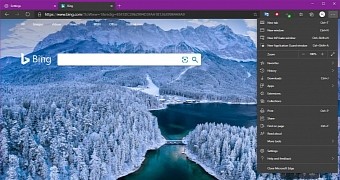Microsoft’s attempts to build a solid browser that would compete against the likes of Google Chrome and Mozilla Firefox have been over-discussed throughout the years, especially following the decision to replace Internet Explorer with Microsoft Edge.
Many believed Microsoft Edge, originally referred to as Project Spartan, would be the highly-anticipated Microsoft browser that would crush Google Chrome, and using the large Windows userbase, become the number one browser on the desktop.
This didn’t happen, however, due to a number of reasons, and I’d say the most important were the lack of support for extensions at first and the rare updates that only landed as part of Windows 10 feature updates.
In late 2018, Microsoft decided to give another try to building a good browser for Windows 10, but this time the company more or less surrendered to the domination of Chrome in this market. So what it did was give up on the original Edge version and build a new one based on Chromium, the same engine that powers Google Chrome.
With this approach, Microsoft can significantly reduce the feature gap between Google Chrome and its own browser, although it goes without saying this decision wasn’t necessarily received well by everyone.
Mozilla CEO Chris Beard said in a December 2018 post that Microsoft not only abandoned EdgeHTML, but it gave up on “an independent shared platform for the Internet.”
“By adopting Chromium, Microsoft hands over control of even more of online life to Google,” he posted.
After more than one year of beta testing, the new Microsoft Edge is ready for prime-time, coming with a feature lineup that obviously reminds of Google Chrome, but which retains the familiarity of the Windows 10 browser.
In fact, this has been one of the priorities from the very beginning: rebuild Microsoft Edge on Chromium but without losing the familiar experience that users got in Windows 10. So the old and the new Edge look and feel the same at some level, with some features, such as Collections, also migrated to the new browser.
By siding with Google, it’s very clear that Microsoft made a choice of building a browser that offers a similar feature lineup with Google Chrome, but which at the same time feels like home on Windows 10. And because it’s being updated via Windows Update, Edge should technically receive updates much easier now than before, so Microsoft can resolve another drawback that led to the failure of Project Spartan.
Microsoft has obviously learned from its own mistakes, and now Edge launches from the very beginning with extension support, but at the same time, the company wants to do things in its own way. The browser also comes with Microsoft’s own trusted store, where you can find extensions that are verified by Microsoft. Of course, the Chrome Web Store also works, as it does on any other Chromium browser, but Microsoft hopes you’ll stick with its own collection of add-ons for extra security.
After all of this, there’s a good chance Edge would no longer be the best browser to download Google Chrome. But at the same time, Microsoft moving to Chromium undoubtedly makes Google happy. And Beard knows what this means.
“Making Google more powerful is risky on many fronts. And a big part of the answer depends on what the web developers and businesses who create services and websites do. If one product like Chromium has enough market share, then it becomes easier for web developers and businesses to decide not to worry if their services and sites work with anything other than Chromium,” he said.
At the end of the day, it’s still you the one to decide which way to go. Will you replace Google Chrome with Microsoft Edge? Or do you plan to stick with your existing browser moving forward?
Let us know what you think in the box below.

 14 DAY TRIAL //
14 DAY TRIAL //